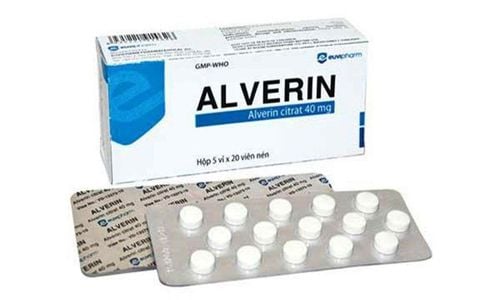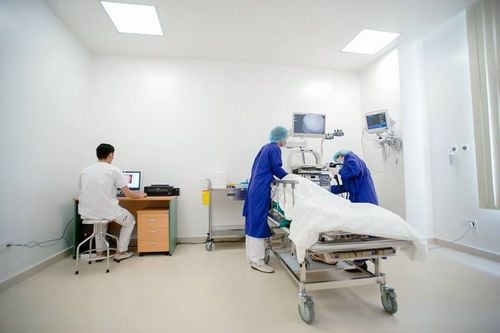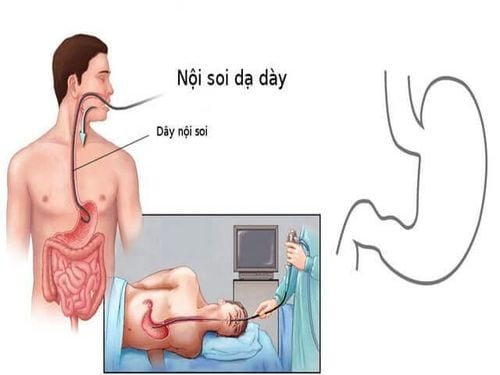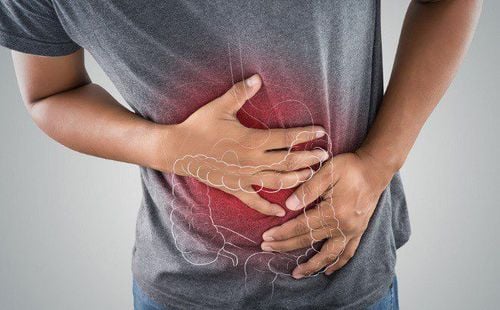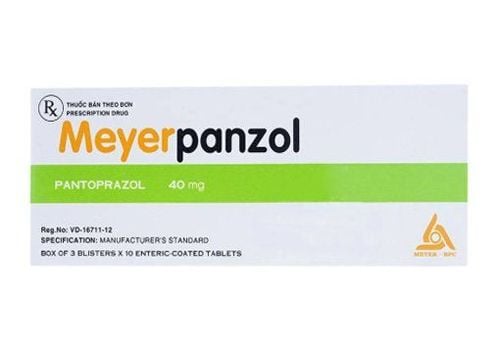This is an automatically translated article.
Answered by Master, Doctor Mai Vien Phuong - Gastroenterologist - Department of Examination & Internal Medicine - Vinmec Central Park International General Hospital
Reflux esophagitis is a dangerous disease and can leave many complications. Early detection of the disease gives a better chance of treatment. With the development of modern science and technology, there are now many interventions to treat reflux esophagitis.
1. Gastroesophageal reflux disease
Gastroesophageal reflux disease (GERD) is the most common upper gastrointestinal (GI) disorder in the United States, defined as symptoms or lesions caused by the reflux of gastric contents into the esophagus. Stomach. Proton pump inhibitors (PPIs), after activating acids to sulfonamides, covalently bind to the cysteine residues on the luminous surface of the proton pump H + / K + ATPase in the parietal cell, blocking its transport ion transfer and acid secretion.
Chemically, all PPIs consist of a benzimidazole ring and a pyridine ring but differ in side ring substitutions. Although PPIs are currently the most effective treatment for GERD and its complications, up to 40% of patients with non-erosive reflux disease (NERD) remain symptomatic on standard therapy, and Approximately 10-15% of patients with erosive esophagitis (EE) are not in complete remission after 8 weeks of treatment.
Patients who continue to have symptoms despite PPI therapy are considered to have refractory GERD, usually defined as the persistence of typical symptoms unresponsive to stable, twice-daily doses of PPIs. every day for at least 12 weeks of treatment. Up to 30% of GERD patients have treatment-resistant GERD.
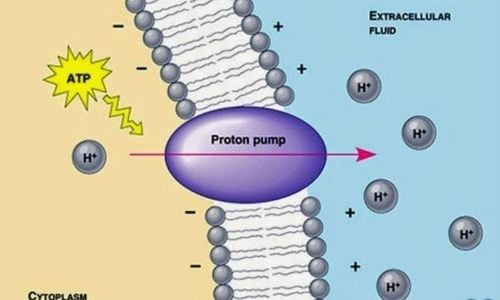
2. Causes of Resistant GERD
There are many potential causes of resistant GERD, which vary in incidence, clinical importance, and symptom severity and frequency. Compliance and poor compliance should first be assessed before continuing with the assessment.
The most common mechanisms of resistant GERD include bowel dysfunction, weak acid reflux, and excess acid. Factors related to metabolism and bioavailability play a limited role in PPI treatment failure. GERD-like symptoms can also result from a variety of other disorders, such as eosinophilic esophagitis (EoE), drug-induced esophagitis, infectious esophagitis, and achalasia, which should be considered. when differential diagnosis with patients whose symptoms do not improve.
There are many potential causes of resistant GERD, which vary in incidence, clinical importance, and symptom severity and frequency. Compliance and poor compliance should first be assessed before continuing with the assessment. The most common mechanisms of refractory GERD include bowel dysfunction, weak acid reflux, and excess acid.
Factors related to metabolism and bioavailability play a limited role in PPI treatment failure. GERD-like symptoms can also result from a variety of other disorders, such as eosinophilic esophagitis (EoE), drug-induced esophagitis, infectious esophagitis, and achalasia, which should be considered. when differential diagnosis with patients whose symptoms do not improve.

3. Treatment of reflux esophagitis, resistant to treatment
There are countless potential therapies that vary in effectiveness, invasiveness, and accessibility. Most treatment strategies target one or more of the underlying mechanisms mentioned above.
Table 1: Treatments for resistant reflux esophagitis
Lifestyle changes ○ Weight loss, diet
Medications ○ Antacids, motility drugs, antidepressants, reflux inhibitors
Interventional procedures ○ Translating gastric aneurysms or endoscopic ultrasound ablation of gastric aneurysms
Surgery ○ Gastric aneurysms
Alternative and complementary therapies ○ Acupuncture, treatment by herbal
3.1. Interventional Procedures Laparoscopic Gastric Angioplasty
Anti-reflux surgery may be considered for patients who have failed PPI therapy or have complications of reflux, such as inflammation. Severe esophageal stricture, stricture or ulceration risk of esophageal perforation. Surgery may also be appropriate for patients who cannot tolerate or are not compliant with long-term drug therapy.
The main surgical intervention for the treatment of GERD is laparoscopic gastrectomy. Although some cases have shown that antireflux surgery improves symptoms in patients with refractory GERD, larger review and controlled studies have shown that surgery is mainly effective for patients with refractory GERD. patients with a history of partial or complete response to PPI therapy.
Surgical outcomes are also higher for patients with typical symptoms with objective evidence of acid reflux and good adherence to preoperative anti-reflux medications. Possible side effects of laparoscopic surgery include dyspepsia, dysphagia, and flatulence syndrome, as well as a recurrence of symptoms. Given the limitations and possible side effects of antireflux surgery, all patients with an indication for surgery must be thoroughly evaluated for symptoms and monitored for reflux during PPI therapy.
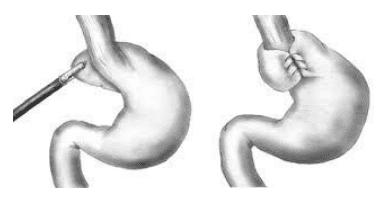
3.2. Endoscopic Reflux Esophagitis Intervention The Stretta Technique
Stretta is a minimally invasive endoscopic procedure for the treatment of gastroesophageal reflux disease (GERD) by delivering radiofrequency energy in the form of electromagnetic waves through electrodes at the end of the catheter to the lower esophageal sphincter (LES) and gastrocnemius muscle - the area of the stomach just below the LES. The energy heats up the tissue, eventually causing it to swell and harden; How it works was not understood as of 2015, but it was thought that perhaps heat causes local inflammation, collagen deposition, and muscle thickening of the LES, and it may disrupt the nerves there. .
Stretta improves symptoms of resistant GERD by delivering radiofrequency energy to the lower esophageal sphincter of the LES, resulting in increased lower esophageal sphincter pressure. The Stretta technique has been shown to improve the anti-reflux barrier as well as reduce reflux volume, esophageal pH, and esophageal acid exposure. In a recent trial of Stretta, 72% of patients with treatment-resistant GERD showed a normalized GERD health-related quality of life (HRQL) score and 41% reported complete discontinuation of therapy. PPI after 10 years of follow-up.
However, data are inconsistent, with a recent systematic review showing no significant benefit over placebo. Previous clinical use was limited due to concerns about esophageal perforation, but more recent studies indicate that the most common adverse effect is transient chest pain that does not require treatment.
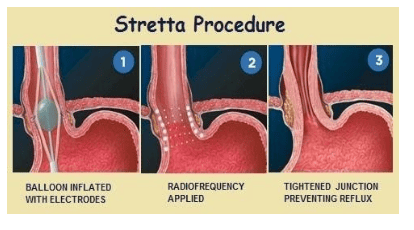
3.3. Transoral gastric aneurysm (TIF) TIF was performed using an EsophyX device that was delivered endoscopically. EsophyX allows the creation of an artificial valve in the pericardial position of the stomach. Although limited, long-term data suggest that TIF may be effective for symptom control and reduction in PPI use over 2–6 years. There is no evidence that TIF is more effective than laparoscopic Nissen aneurysm reconstruction. However, two recent studies demonstrated that TIF was superior to high-dose PPI therapy for the control of heartburn and regurgitation at 6-month follow-up. TIF may be most useful for patients with diaphragmatic hiatus hernia <2 cm and grade I/II grade Hill valve folds.
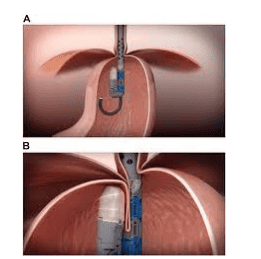
4. New techniques in the treatment of Reflux Esophagitis
LINX is a magnetic augmentation device that is surgically positioned around the LES. It was approved by the FDA in 2012 for severe, refractory GERD symptoms that have not responded to alternative treatments. Data are limited to short-term case series, but numerous prospective studies have demonstrated the safety and effectiveness of LINX in the treatment of patients with intractable GERD symptoms.
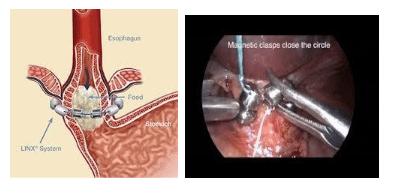
4.1. LES Electrical Stimulation Therapy Another new procedure for refractory GERD is LES electrical stimulation (EST) therapy, which is used to treat gastrointestinal motility disorders. The LES stimulation system consists of an implantable pulse generator (IPG), a bipolar lead with two electrodes, and an external programmer. IPG produces electrical stimulation to the LES 8–12 times per day, for 30 minutes per session. LES stimulation in patients with GERD has been shown to increase resting LES pressure without affecting bowel motility or dilating the LES. Although studies demonstrate that EST is safe and effective for treatment-resistant GERD at both 1- and 2-year follow-up, data are limited to short-term case series and open-label, concurrent studies. More research is needed on the mechanism of action.
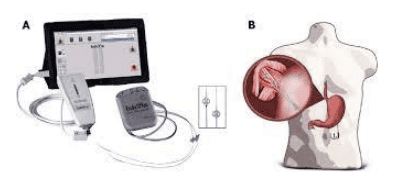
4.2. The Medigus Ultrasonic Surgical Stapler (MUSE) MUSE is an endoscopically inserted device that can be used to form an artificial anti-reflux valve in the esophagus similar to a TIF. The procedure is created using a video-guided surgical stapler and ultrasound. A multicenter prospective trial found that at 6-month follow-up, 73% of patients showed a significant improvement in GERD-HRQL scores, with 65% of patients discontinuing PPIs altogether. The first 24 patients treated with MUSE suffered a number of adverse events including pneumomediastinum, gastrointestinal bleeding, and edema formation. However, after redesigning the engineering process and the device itself, no other serious adverse events were reported. The 4-year follow-up found no new adverse events, but the proportion of patients not taking daily PPIs was reduced from 84% to 69%.
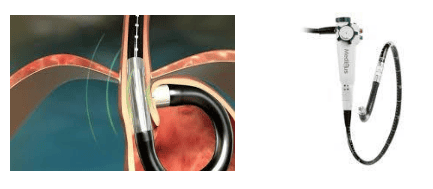
GERD resistant to PPIs is a common problem affecting a large proportion of patients with GERD. Resistant GERD may not have an underlying cause and may actually represent several disease states. Potential causes include drug nonadherence, visceral hypersensitivity, nonacid reflux, motility disturbances, and altered PPI metabolism. Other disease states such as achalasia, EoE, and esophageal cancer must also be considered. The primary basis for evaluating a patient with refractory GERD is upper gastrointestinal endoscopy and impedance monitoring to clarify the nature of any residual reflux. Most therapies involve optimizing GERD treatment and targeting the underlying mechanism of resistance if identified. Therapies range from pharmacological to procedural that can be used alternatively and as complementary.
Vinmec International General Hospital is a prestigious address trusted by many patients in performing diagnostic techniques and treating diseases of reflux esophagitis, refractory reflux esophagitis, gastritis, and gastritis. .... Along with that, at Vinmec, the diagnosis through colonoscopy with the Olympus CV 190 endoscope, with the function of NBI (Narrow Banding Imaging - endoscopy with narrow light frequency band) gives results. The results of the analysis of mucosal pathology are clearer than conventional endoscopy, detecting ulcerative lesions, reflux in the esophagus, stomach, Barrett's modified lesions, and cancer lesions in the early stages. early stage.... Vinmec International General Hospital with modern facilities and equipment and a team of experienced experts who are always dedicated in medical examination and treatment, customers can rest assured with Colonoscopy service at Vinmec International General Hospital.
Please dial HOTLINE for more information or register for an appointment HERE. Download MyVinmec app to make appointments faster and to manage your bookings easily.





